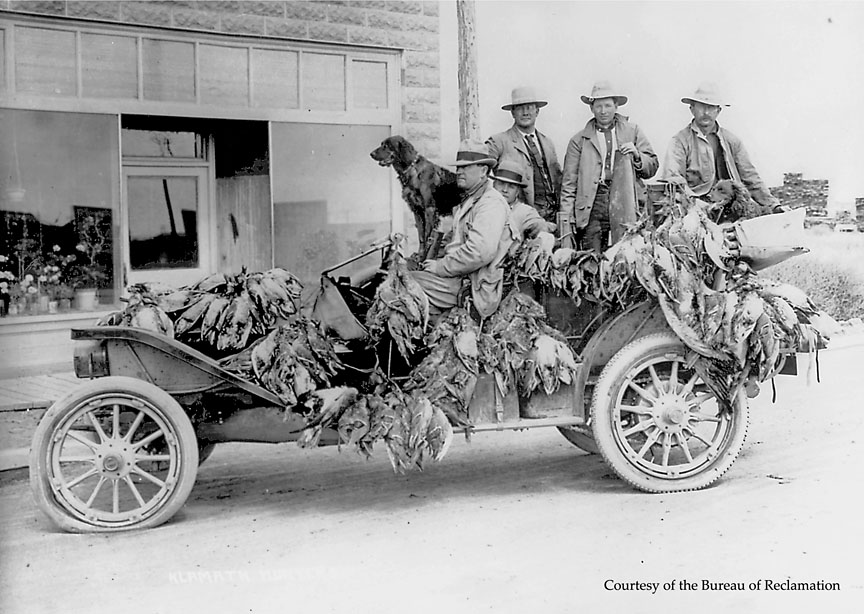- Catalog No. —
- BOR KCM 5
- Date —
- n.d.
- Era —
- 1881-1920 (Industrialization and Progressive Reform)
- Themes —
- Environment and Natural Resources, Government, Law, and Politics
- Credits —
- US Bureau of Reclamation, Klamath Basin Office
- Regions —
- Southwest
- Author —
- Unknown
Duck Hunters
The Klamath National Wildlife Refuges, which includes the Upper Klamath, Klamath Marsh, and Bear Valley Refuges in Oregon and the Lower Klamath, Tule Lake, and Clear Lake Refuges in California, is considered the apex of the Pacific Flyway—a critical resting and feeding ground for migratory waterfowl. These refuges likewise attract waterfowl hunters. While in the Klamath Basin in 1905, Audubon Society photographers and bird enthusiasts William L. Finley and Herman Bohlman learned that the area was productive for waterfowl hunters who supplied hat makers (bird feathers were popular on millinery) and restaurants. Finley and Bohlman effectively lobbied the U.S. Government to create in 1908 the first of the Klamath National Wildlife Refuge. The creation of these refuges protected the waterfowl from unlimited hunting.
A current debate in the Klamath Basin is whether U.S. Government water policies adequately address the needs of both wildlife and area farmers. The U.S. Bureau of Reclamation controls water flow from dams and irrigation canals, and decides, based on biological surveys, whether water levels meet the needs of endangered fish (coho salmon, Lost River sucker, and shortnose sucker) and area farmers. Waterfowl hunters also have an interest in the water debate. The Kuchel Act of 1964 allows farmers to lease land in Klamath National Wildlife Refuges so long as 75% of the land is dedicated to growing cereal grains “dedicated to wildlife conservation.” When the Bureau of Reclamation limits water for irrigation, farms in the Klamath National Wildlife Refuges are also unable to irrigate important wildlife-friendly crops that attract waterfowl.
Further Reading:
Matthewson, Worth. William L. Finley: Pioneer Wildlife Photographer. Corvallis, Oreg., 1986.
Written by Robert Donnelly, © Oregon Historical Society, 2004.
